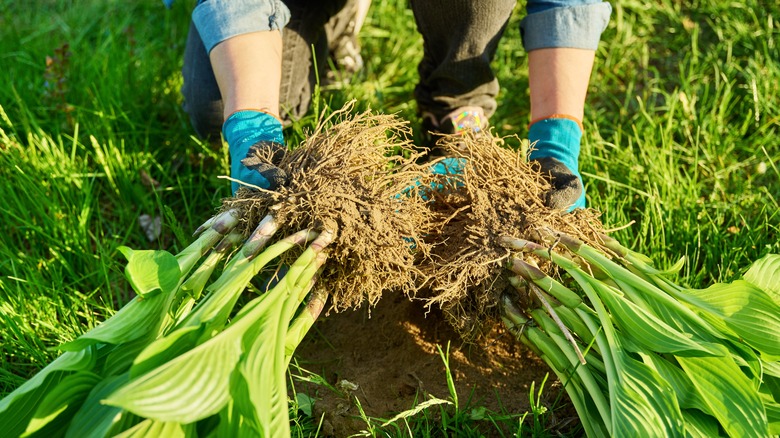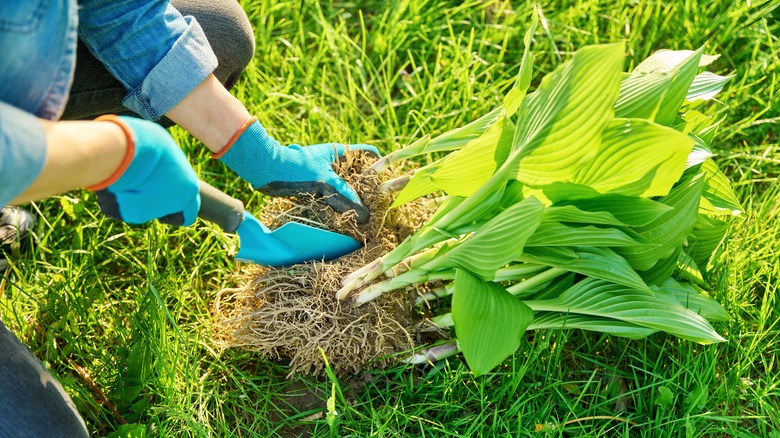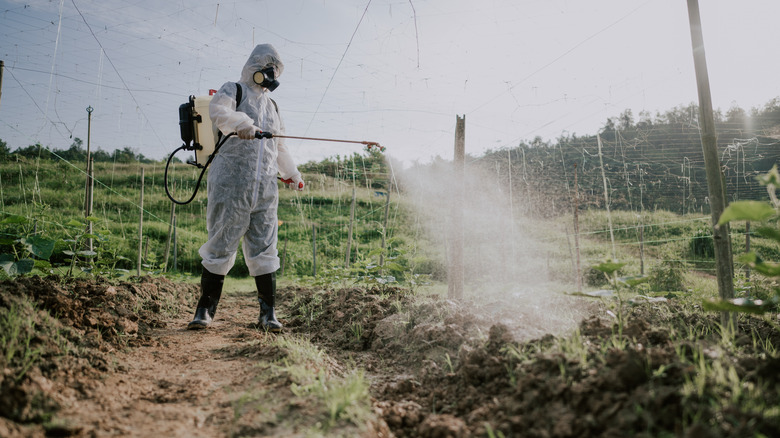How To Remove Hostas If You Want Them Out Of Your Garden
Perennial plants like hostas are known for their appealing foliage and low maintenance needs. However, occasionally, you'll need to get rid of these plants in your garden. There are various ways to accomplish this. If you prefer a more hands-on method, you can choose to pull them by hand. Chemical solutions like weed killers and more natural approaches like vinegar are also options.
While hosta plants can add lush foliage and a touch of elegance to shady areas in your garden, there are several compelling reasons you might want to remove them. Hostas are known to attract various pests, from slugs and snails to deer, which could then move on to feast on other, more vulnerable plants in your garden. And though not invasive, they are fast-growing and can take up more space than you initially allocated, thereby throwing off your garden's overall design.
Additionally, if you're thinking of giving your garden a makeover, hostas could prove to be an obstacle. Their preference for shade might conflict with your plans to introduce plants that require full sun exposure. Finally, let's not forget that gardening styles and preferences change over time; what seemed like the perfect plant choice years ago may not align with your current vision for your outdoor space. For these reasons and more, pulling hostas out is the best option.
Natural methods: pulling by hand and using vinegar
Pulling hostas by hand is your first and most straightforward option for getting rid of them. To facilitate this task, start by watering the soil to make it more pliable. Once the ground is adequately moist, use a spade or a shovel to gently loosen the soil surrounding the hosta. With a firm grip at the base of the plant, pull it out, removing as much of the root system as possible to prevent future regrowth. This method is most effective and easiest when the hostas are relatively small and the soil is moist, as drier soil can make it difficult to extract the entire root system.
If manual labor isn't your thing, or you want to steer clear of chemicals, consider the boiling water method. Boiling water weakens the plant almost instantly upon contact. Pour it carefully over the hostas, targeting the base of each plant to maximize impact. This technique is particularly effective on smaller, less established hostas. To ensure your safety, always remember to wear protective gloves and long sleeves to minimize the risk of burns or other injuries. Lastly, another effective herbicide is vinegar. Fill a spray bottle with undiluted white vinegar and coat the hosta leaves generously. It's best to carry out this operation on a sunny day; the natural heat from the sun coupled with the acidic vinegar accelerates the plant's demise.
Chemical methods: herbicide and weed burner
Suppose you're dealing with a larger area of hostas or simply prefer a less labor-intensive method. In this case, chemical weed killers can offer a quick and effective solution. Opt for a systemic herbicide like glyphosate; the leaves of the hostas will absorb this chemical and transfer it down to the roots, thereby killing the entire plant. It's important to follow the manufacturer's instructions meticulously for optimal results. Choose a calm day for the application to minimize the risk of the herbicide drifting onto nearby plants that you don't want to harm. Always take necessary safety precautions, such as wearing gloves and keeping pets and children away from the treated area until the herbicide has fully dried.
Another alternative is to employ a weed burner for the job. This tool uses propane gas to produce a flame that can efficiently scorch the hostas, causing them to wilt and eventually die. When using a weed burner, make sure to read the user guide thoroughly and follow all safety instructions. Also, remember to wet the soil first, moving the burner slowly to ensure that you cover the entire foliage. It's important to use this item with extreme caution; keep the flame away from other plants you want to retain, and be aware of any surrounding combustible items.


